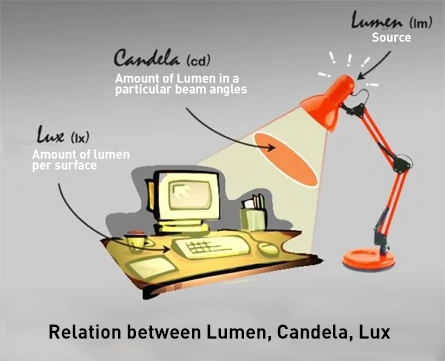Light is the electromagnetic waves that propagate in linear waves. Light and all other electromagnetic waves basically have three properties:
Frequency: It is inversely proportional to the wavelength and the human eye perceives this feature as color.
Intensity: Also referred to as amplitude, it is perceived as brightness by the human eye.
Polarity: It is the angle of vibration, it is not perceived by the human eye under normal conditions.

Since light is in a wave form, it has a certain frequency value. The color of the light changes according to the frequency it has. The human eye is capable of seeing colors between red and purple. If the frequency of the light increases further, it goes beyond our vision limit and is called ultraviolet light. On the contrary, if the frequency decreases to a lower frequency than red, it is called infrared light.
For example, the TV remote emits infrared light when operating. We cannot see this with the naked eye, but if we look at it with a cell phone camera, we can see light at a frequency that the eye cannot see.
Light is a matter that enables living beings to see by hitting objects or directly reflecting off a radiation after it emerges from the light source.
Objects that can be seen by emitting light spontaneously are called light sources.
The wavelength of visible light is between 380 nm and 760 nm. In the electromagnetic spectrum, this field lies between infrared and ultraviolet.

The lumen (symbol: lm) is the unit for luminous flux. It measures the total amount of light emitted by a light source in all directions. Luminous flux takes into account the sensitivity of the eye to the visible part of the electromagnetic radiation. Lumen is therefore the unit to measure the brightness of a light source independently of the direction of the light beam.
The lux (symbol lx), latin for light, is a unit of illumination: 1 lux is the illuminance produced by 1 candela on a surface perpendicular to the light rays at a distance of 1 meter from the source.
The lux thus corresponds to the illuminance that is obtained when each square meter of the considered surface receives a luminous flux of one lumen. The number of lux is thus found as the quotient of the total received luminous flux, expressed in lumens, and the size of the illuminated area expressed in square meters; therefore 1 lux = 1 lumen / m².
Brightness is indicated by the candela (symbol cd). The light intensity indicates how much light is in each piece of a light beam. The word candela means candle in Latin. One candela corresponds approximately to the light intensity of a normal candle.
Another way to understand the basic difference between these terms: